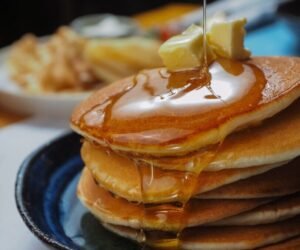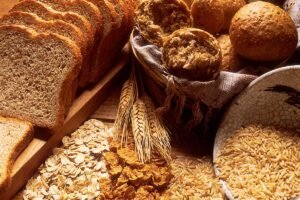Almost everyone has experienced the disappointment of bringing home a loaf of bread from the supermarket on the weekend only to find that it has little white patches. Most of the time, they are white mold on bread; yet sometimes, they’re just flour.
Now, how can you tell these two scenarios apart? If you’re here for the answer, Eatnlivewell got it. The 3 measures below will help you detect moldy bread in no time.
What Is Bread Mold?
Similarly to mushrooms, molds are fungi. Molds and yeasts get nourishment from the food they feed on, which might be as simple as bread.
Mold on bread is actually clusters of spores, which the fungi need to proliferate. These spores can spread throughout the packaging and germinate on other slices of bread.
Mold on bread can be of different colors and types. – Well The New York Times
They are why mold can be any shade from white to black (or yellow, green, gray, or grayish black). However, you can’t use appearance alone to determine the species of your mold cavity, as the shade of the spots might differ depending on the fungus’s developing environments and as it goes through its life cycle.
5 distinct kinds of mold can colonize bread, each with a wide range of possible subspecies. These 5 main types of mold include:
- Aspergillus
- Penicillium
- Fusarium
- Mucor
- Rhizopus
How To Tell If It’s Mold Or Flour
Typically, the first phase of bread mold is the appearance of a pale white layer. But it’s not always the case. Sometimes, it could be white powder on bread – artisan bread is an excellent example.
 The white thing on your bread can be confusing. – Sharp Healthcare
The white thing on your bread can be confusing. – Sharp Healthcare
Although enjoying a slice of bread coated with powder is a delightful experience in and of itself, it can be difficult to tell whether the whitish thing is powder or mold. The good news is that there are measures you can use to determine whether the white patches on your food are simply flour or mold.
How To Tell If Bread Is Moldy: 3 Basic Tests
Learn how to determine the bread’s quality with these easy tests.
Visual Inspection
You should examine your bread attentively before throwing it away if you suspect it has mold. Place the loaf on the table where you might observe it without opening the wrapping.
Color is the key optical cue. Mold possesses a slightly off-white tint and appears blander than flour does. If you see any other shades, especially ones like bluish or greenish, you can tell that it expires. You can evaluate the pattern of the patches’ texture in addition to their colors. If they’re fuzzy or lumpy, they are most likely mold.
Put the loaf out for a day or two to watch if the patches grow or change their shade if you need more clues.
The Scrape Test
The scrape test is an effective secondary method if the visual inspection fails to detect the white patches. You can try to remove some of the white stuff by scraping it with a knife or your finger. It’s undoubtedly molded if the stain won’t sweep off, flakes off in bits, or seems tacky.
The Smell Test
Sadly, the scrape test isn’t foolproof since sometimes thin layers of mold will be similar to powder. Sniffing your bread might harm the human body, so use caution when sniffing your bread. If you want to detect mold without getting too close, waft your fingers over it and take a quick sniff.
White Mold On Bread: Is It Safe To Eat?
A few molds, such as those utilized to produce blue cheese, are fit for consumption. Unfortunately, your bread may be hazardous and have an unpleasant taste if exposed to the spores that can develop on it.
You can’t tell what species of mold is spreading on your loaf by visual inspection, so it’s safer to conclude it’s harmful and throw it away.
It’s also not a good idea to smell moldy food closely because doing so could expose you to fungal spores. Huffing mold spores can trigger asthma attacks and other respiratory issues in people allergic to them.
 Moldy bread is inedible. – Pattaya Thailand
Moldy bread is inedible. – Pattaya Thailand
Anaphylaxis and other potentially fatal complications can occur in people allergic to breathed mold or consume it via food. However, this is a rare occurrence.
Last but not least, those with a deficient immune mechanism (for example, those with poorly managed diabetes) are at risk of contracting an infectious disease from breathing in Rhizopus on food. This condition may be fatal despite its rarity.
How Long Does Bread Last?
Unlike many other food products, bread possesses a relatively limited shelf life and is best consumed within 5 days of purchase or preparation. Its shelf life, or how long you can maintain its quality before it spoils, depends on how you keep it.
Bread’s longevity drops from 5 days to 48 hours when kept at room temperature. It’s best to store your bread in the refrigerator in a grocery bag or cling wrap.
Bread lasts up to 5 days in normal conditions. – Food Network
Freezing bread is the best way to keep it fresh for an extended period (as with any other food like chicken or asparagus). Put it in a plastic ziplock bag and press out all the air before sealing it. Your bread will remain fresh for up to 3 months if stored this way.
FAQs
Can You Always See Mold On Bread?
Of course not! Still, if you find mold on a bread slice, you can rest assured that the entire loaf is contaminated. If you find even a single spot of mold on a loaf of bread, it’s advisable to toss the whole thing and have a new batch.
Is Bread Ok If It’s Not Moldy?
You can eat it without worry if there isn’t mold on your bread loaf. To be fair, it probably will taste better than a freshly baked slice of bread. You can still use the old, stale loaf in many dishes, such as panko and pastry custard.
Wrapping Up
It’s never safe to eat moldy bread, yet, it’d be a waste throwing away your loaf, mistaking the decorative flour for mold. Hopefully, our 3 measures above have helped you identify white mold on bread and distinguish them from powder and flour.
For more content like this, visit our Eatwell section.



